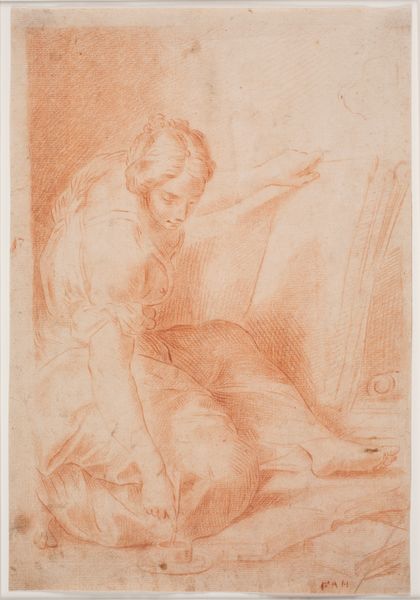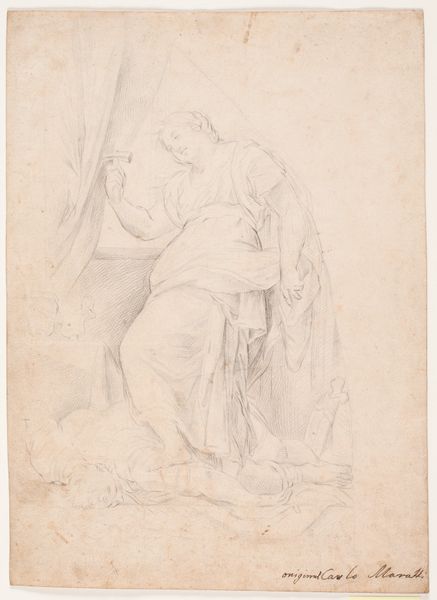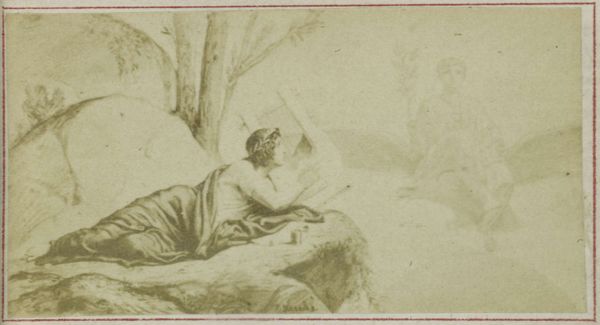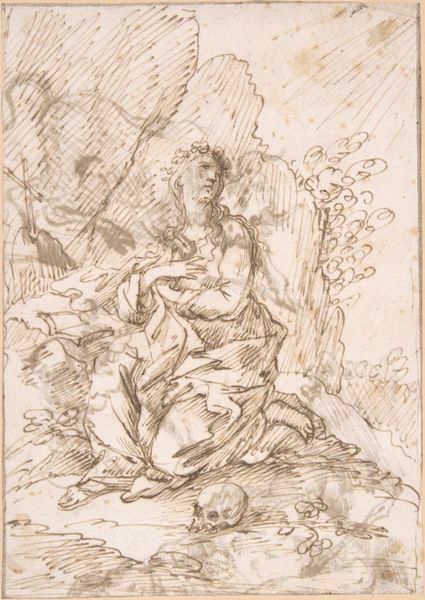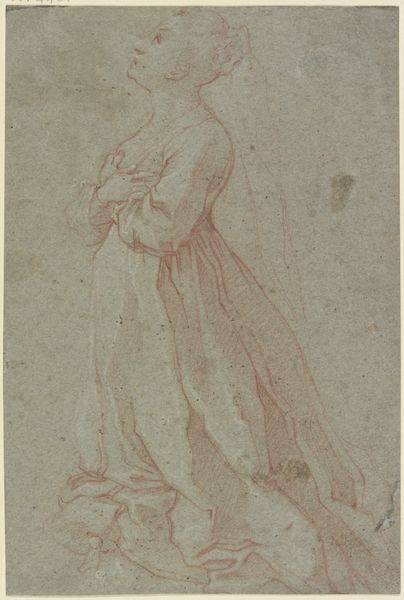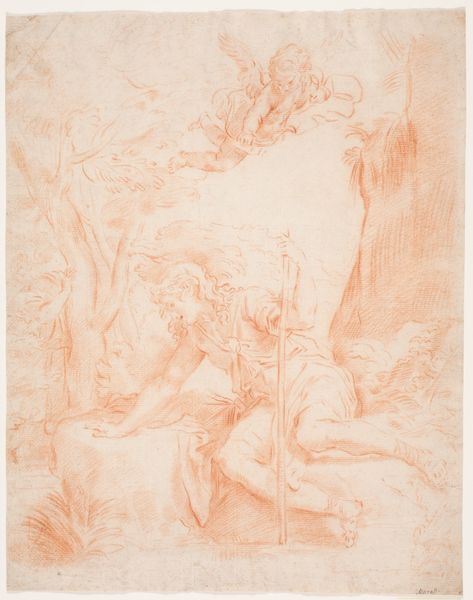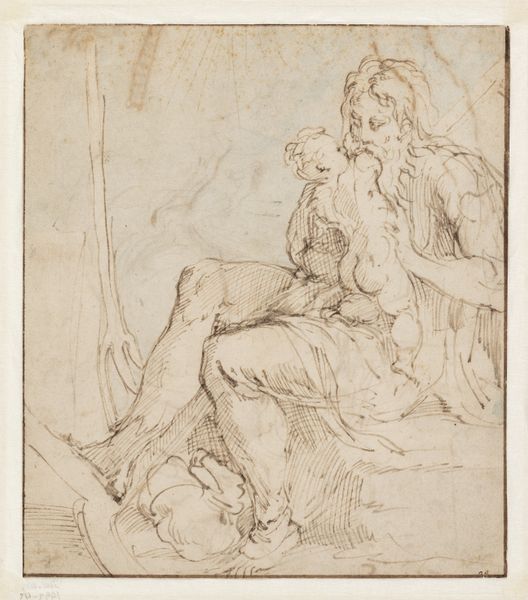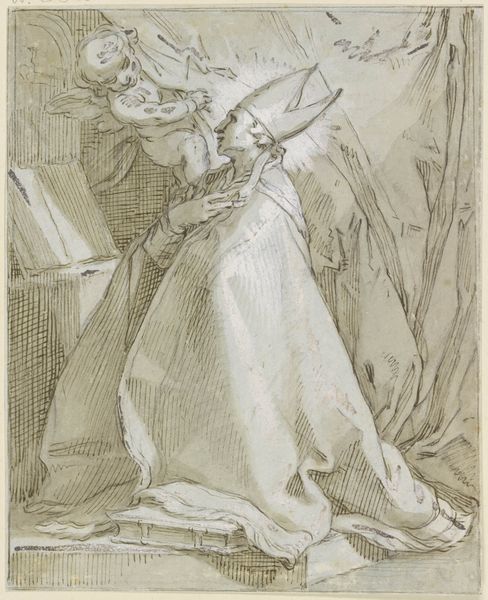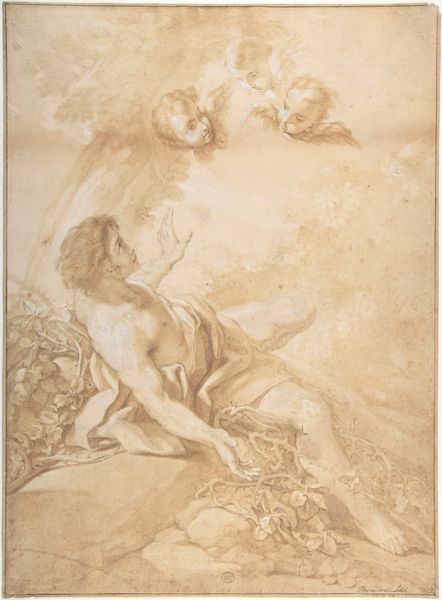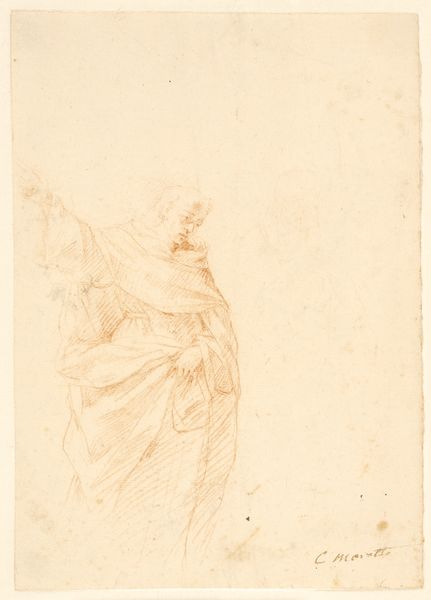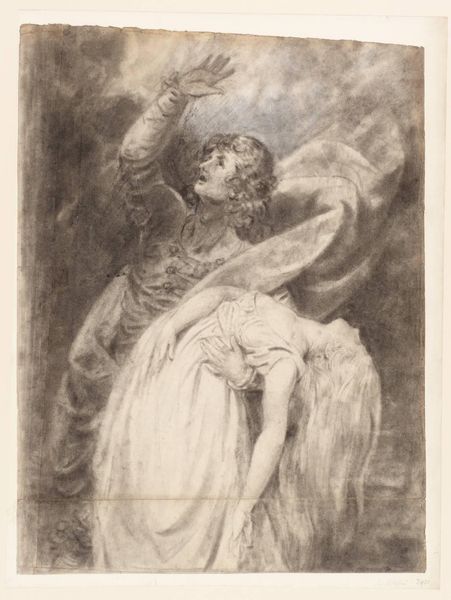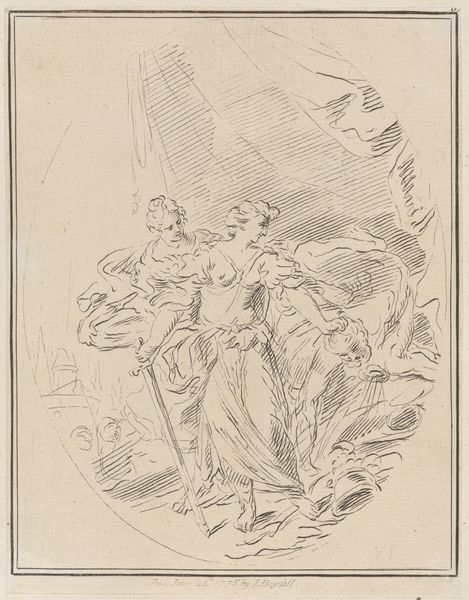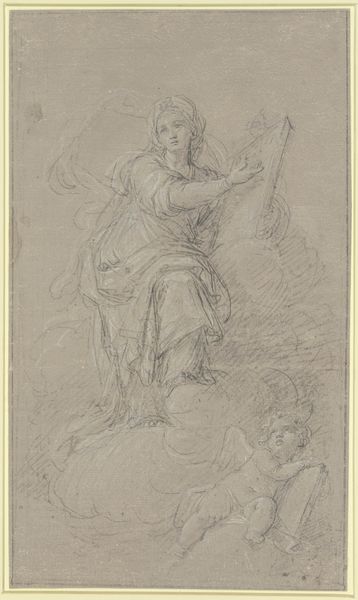
drawing
#
drawing
#
figuration
#
history-painting
#
italian-renaissance
Dimensions: sheet: 25 × 18.2 cm (9 13/16 × 7 3/16 in.) mount: 33.7 × 26.5 cm (13 1/4 × 10 7/16 in.)
Copyright: National Gallery of Art: CC0 1.0
Editor: Here we have Pier Francesco Mola's "Saint Francis Receiving the Stigmata," a drawing from around 1655. The red chalk gives it a feeling of warmth, but also of blood, perhaps foreshadowing the wounds. What do you see in this piece? Curator: This drawing pulses with the visual language of religious experience. Saint Francis, on bended knee, receives the stigmata – the wounds of Christ. It's a powerful symbolic moment. Notice how the artist uses light? Editor: Yes, the rays shining down are hard to miss! Are they just a visual effect or something more? Curator: Ah, light, the quintessential symbol of divine presence. These aren't just rays, they are vectors of meaning, connecting the earthly and the celestial. Think about what the stigmata meant: complete identification with Christ through suffering. Mola uses the visual vocabulary of light to convey that transfer. Editor: It's interesting how Mola uses such simple lines to convey such a loaded, meaningful concept. Curator: Precisely. The rawness of the sketch only amplifies the raw emotional and spiritual power of the scene. Consider, too, how Francis's pose echoes traditional depictions of the crucifixion. This isn't merely a drawing; it is an act of remembering, of re-living. Mola invites us into a potent and highly venerated act of faith. What will you remember from this scene? Editor: The convergence of light and suffering; it really gives new dimensions to the drawing and St Francis' experience. Thank you. Curator: And thank you, for helping me reconsider the continued presence of sacred image-making.
Comments
No comments
Be the first to comment and join the conversation on the ultimate creative platform.
